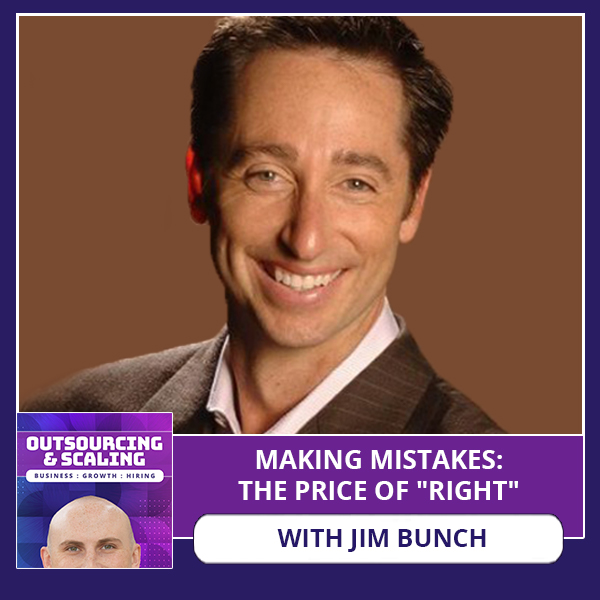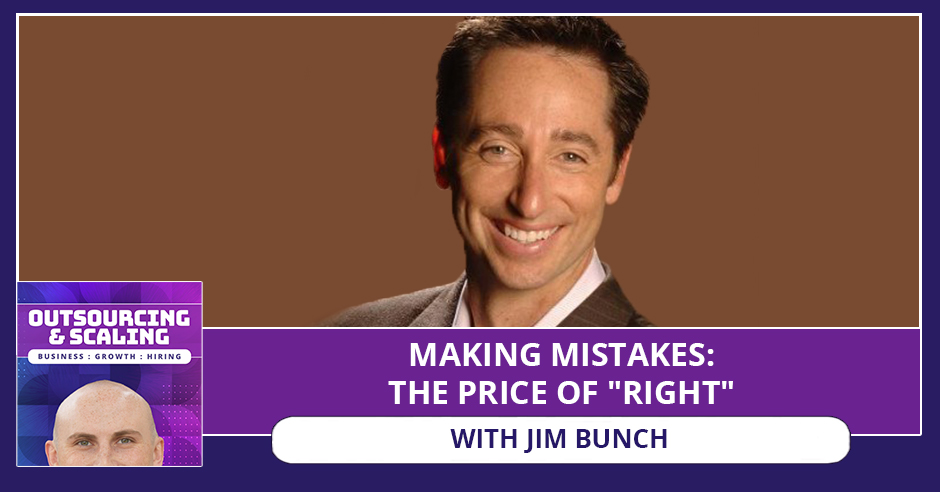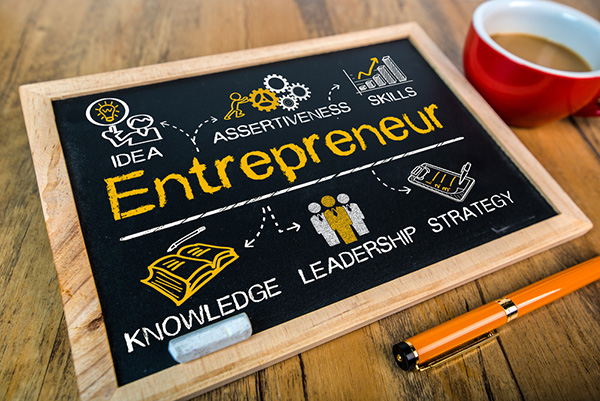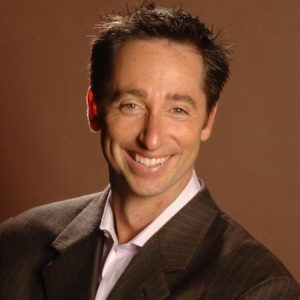


There is an almost preternatural obsession among people, especially among entrepreneurs, with getting every single little thing they do “right,” no matter what being “right” costs them down the line. In the long term, making mistakes is a natural and healthy part of any successful journey, especially when your business is growing and you need to begin to outsource. Jim Bunch is known for being an impact investor and advisor who is on a mission to lead a global initiative to change the world. He joins Nathan Hirsch in discussing how mistakes are embedded in the journey you’re choosing to take as an entrepreneur. The key is making sure you use those mistakes to springboard towards learning and getting better.
—
Listen to the podcast here:
[smart_track_player url=”https://www.podetize.com/statsapi/www.podetize.com/wp-content/uploads/fileuploads/11-5b145ef137b51b3d1af0633e9305c43d/03/2020/73f61738db51c3351f246f1f31cc8a61.mp3″ title=”Making Mistakes: The Price Of Right With Jim Bunch” artist=”Nathan Hirsch” image=”https://freeup.net/wp-content/uploads/2019/04/OAS.png” ]
Download the audio file here.
Making Mistakes: The Price Of “Right” With Jim Bunch
My guest is a friend of mine, Jim Bunch. Jim, how are you doing?
Nathan, it’s great to connect with you.
For those of you that don’t know, Jim actively invests, advises Impact CEO’s, writes, lectures and serves as the Chairman of the Board to the US Green Chamber of Commerce. His latest ventures include impact investing for the education and energy sectors. He’s well known as an impact investor and advisor who’s on a mission to lead a global initiative to change the world. We’re going to talk all about that, but first, let’s take a gigantic step back. What were you like as a kid growing up? Were you a straight-A student? Were you a rebel? Did you always know you wanted to be an entrepreneur and make an impact?
I was shy. I was insecure. I was skinny and I was short. I was 5’6” when I graduated in high school. I grew up during college. I’m 6’4” now. The thing that boosted my confidence because I was shy and insecure was I took a speaking course in college. I got some applause. The next thing you know, I was like, “This could be cool.” That was probably one of those pivotal points for me. A lot of my life, I was introverted. I was shy. I was a thinker. I thought through a lot of stuff. Looking back, I’ve had a spiritual vein that ran through me that I wasn’t aware of. I always cared about people who want to make a difference.
Can you tell people a little bit about your story, how you got into entrepreneurship and what you’ve been able to do?
I started my first business in college. I figured out that this company was using this vitamin shake to help older people regain health. I was at the University of Florida. I realized that it had a high vitamin B complex and some other vitamins. I found out that it cured hangovers. I ended up taking their health product and saying, “I’ve got a lot of college kids that are struggling from a hangover. If you drink this before you go out, you won’t get a hangover.” That was my first venture as an entrepreneur. I met Tony Robbins after I graduated college and that led me down on a whole different pathway. I don’t think I realized at the time how much my mindset needed to change. I didn’t even know what a belief was.
I’m like, “What do you mean I have a belief system?” I learned that with Tony. I was out on the road with him. I learned how to speak. I learned how to roll from the front of the room, which was powerful, especially when you get later into building businesses, talking to your teams, raising capital, things like that. After Robbins, I went to work with Bob Proctor and John Assaraf from The Secret. We built the Life Success Institute. I was 25 years old at that time. I went down this path of personal development. I got deep into my own. I met and worked with a lot of these people. I looked at that and went, “This is all mindset stuff. This is a lot of great spiritual stuff. I learned the universal principles of life and spiritual laws.” I also got into technology. I was always a tech kid. Whenever stuff came out, I was one of those guys who were the first to learn about it. We started building tech companies and that combined with transformation and technology has been my two passions.
You’d talk and work with a lot of different entrepreneurs. Can you talk a little bit about the belief system and maybe some of either the mistakes or the limiting beliefs that they normally have?
I would think the first one that probably presupposes everything is that you can make mistakes. One of my core principles is if you’re an entrepreneur and you’re concerned about making mistakes, you should probably look at a different career path. If you look at this, number one, the universe doesn’t make mistakes. It’s never made a mistake. The universe gives you exactly what you need when you need it. You hear the right message at the right time. It can’t be one split second too earlier or one split second too late. If you start with a core principle or belief that the universe doesn’t make mistakes, then you, which is part of that, can’t make mistakes. You can learn. You can get better faster.
Think about a child. Does a child make a mistake when they fall the first time they try to walk? They learned and yet we go through a school system that teaches us to pass, fail, A player, F player, that’s a mistake because we’re conditioning people against what the universe operates with, which is, “We’re learning.” I’d say that’s number one is switch that belief that you can even make mistakes. If you’re still here and you can fog a mirror, you’re still in the game. You can learn and you can play better. That’s one of the core ones.
You said in the ‘90s you took your first company public. Can you walk people through what that was like? I’m sure there was a crazy experience. What did you learn? How did you build that business up?
It wasn’t my company. I was one of the original team members. When we talk about being a founder in it, I was not one of the founders. I was 25 at the time. The two gentlemen that were the founders were a little bit older than me, not much. Their dad had been successful in building and investing in 40 companies. He was like Yoda to us. There were these two kids. They were in college. They’re watching a microwave turntable spin around. I don’t know if they’re smoking weed or what they were doing. It seems to be popular nowadays, but one of them has this idea that if we put a camera on a tripod and spin it around, you can film. Keep in mind, this was back when there were VHS and beta. I don’t even know if you know what that is.
Cameras had tapes in them and they said if we filmed that, we can film a house. That became one of the first virtual reality or VR 360 things. They talked to their roommates and said, “Can you ditch that tape and turn it into digital?” This is the time of dial-up like your computer would make a noise when you try to connect to the internet. Long story short, we grew that initial team from 6 contractors to 1,500 contractors in a year. We went from zero to IPO in nine months. It was an incredible time. We were based in Silicon Valley, Palo Alto, Oakridge, Tennessee and Toronto, Canada. That was my first experience of working virtually because we did have hundreds of people in our three corporate offices. We had over 1,000 people that were working virtually at that time. That virtual workforce we’ve been doing for decades now. I love it. It’s given me the ability to live on the beach, to travel the world, do what I want to do. I personally have not been wanting to be in a corporate office much over the last couple of decades.

I’m in the same boat. Once I went remote after getting rid of an office, I never want to go back. I know you use FreeUp. You have VAs. You have different people that are all remote. Can you get people behind the scenes of the structure and how you use different remote people?
The companies that we have built I look at building teams. One of the things I like about FreeeUp, I’ll give you a little shameless plug here. That you vet the people because it’s difficult nowadays with all the different services out there. It’s difficult to know and have confidence. If you hire somebody, they’re going to end up working out. Part of it is you’ve got to test it. You going through, sorting, sifting and then categorizing what their skills are is important because I oftentimes will send people to your site because I teach your core business how to run and own and operate a business without you having to be there. I say, “Look at all the different functions that people can do from marketing to sales to finance to legal.” You can build a whole virtual team and work part-time or full-time or whatever you want.
For me, what I share with people is, number one, when you make your first hire, you will often say, “I should’ve done that sooner.” The first hire has to happen faster, make it somebody who offloads tasks for you. In my mental framework, I always go, “What is my time worth per hour if I’m doing active income versus passive?” If I’m doing active income and I’m billing out at $1,000, $5,000, $10,000 an hour because I’m starting a company, I’m raising capital, I’m on a stage, I’m launching a product, whatever it is, I value that time at X. I go, “What are the activities that I’m doing that are $5, $10, $20, $50 an hour work? From my own mental construct, I say, “If I can earn $1,000 an hour and I’m doing a $50 an hour task, I’m losing $950 an hour every time I check that email. Every time that I do research, every time that I have to set an appointment or make a phone call or reschedule.”
I have set it up because otherwise I go, “I can do that. I can get it done.” I have to look at it that I’m losing an opportunity by doing a low dollar. When I say a low dollar, I mean based on where I’m at. It’s not that $50 an hour isn’t great. For me, I’m looking at, “How can I keep increasing my wealth and my abundance?” The other piece I would say, a second little tip here is set up that right mental framework. The next piece is when you get to a point where you can hire people that hire people. That is a very freeing experience. I don’t hire people to do tasks. I hire people that can do the task and hire themselves as somebody to do that task. I’m going in layers of leadership into my organization and I make sure that they can hire, recruit, train and deploy people like the military so that I don’t have to answer those questions anymore. They do. I hope that helps. That’s two things that I do when I’m hiring.
What about building a remote culture? A lot of people struggle with that. You’ve done a good job of that. Can you talk a little bit about culture?
It’s important. I have this core business model and at the center of it is values. I hire based on values. There are all kinds of assessments and stuff you can do. We created our own, but you hire based on what those people value. They don’t have to have all the exact values. If you have 2 or 3 values that align with them and the company, you know that you’ve got the right synergy. We design a mission. What is the mission we’re on? In military terms, it would be like we’re on a mission to overtake that mountain by sundown. That is an achievable mission. Our missions are crazy. We want to reverse climate change in the next ten years. We go for these completely unachievable, but they attract high-level people missions. When I’m looking at that workforce, I had to make sure they align with the values, the vision and the mission that we’re on.
I also like to create experiences for people because if someone works out of their house for too long, they end up getting locked into that mode. Bring people together to one of your events or somebody else’s events. We took our whole team to a mud run. We flew everybody in and went to a mud run. Nobody knew and it was an absolute blast. We brought in our coaches, our staff, everybody, and they participated at whatever level. Those bonding experiences are important. Take them to a digital marketing event. Take them to a mud run or take them to a concert. Do experiences with people because with virtual workforce, you have to be sure that there’s some emotional connection to what you’re doing also.
You have your hand in a lot of different businesses. How do you organize your day, your week and figure out what you should be spending time on?
I operate on three things. Number one, happiness. Number two, health. Number three, wealth. Every day I create a one-page little document here and I write down my three goals. I’m doing a nine-week challenge with a bunch of our clients. I get them to focus on happiness, health, and wealth. What’s crazy about guys like us is it’s easy to do wealth and health goals. The happiness ones are the hardest ones. For example, I’m working on extreme self-care, which means that I’m meditating. I’ve switched to a plant-based diet. I’m taking the time to relax and recharge. I’m walking out of the house and instead of looking at the beach here, I’m walking in the sand. I’m doing the cryotherapy because I’m in the Pacific Ocean. I always focus on my top three happy, healthy and wealthy priorities. When I do those three, it’s a win for the day. I do a lot more than that. I look at what I can do personally and what do I want to delegate. For me, I found that playing the wealthy game where I’m focused on wealth, I create less wealth and I’m more stressed out. When I focus on things that make me happy and healthy, I feel like, “I’m winning every day.” That’s a framework I’ve set up.
I don’t think a lot of people reading can take a lot from that. I want to talk about the impact. You talked about wealth. I feel like a lot of entrepreneurs, they’re in it for the bottom line. They’re in it to provide for their family, whatever their reason is, but they’re not thinking of the impact that they want to have on the world. What changes they want to say, what they want the world to be like for their grandkids or great-grandkids. Can you talk a little bit about why that’s important to you?

Let me preface this by it wasn’t as important until about a few years ago when I went 200 miles deep in the Amazon rainforest and I met a shaman down there. The next thing I’m like, “We ought to protect this place.” I had my own shift. I always tell people, I didn’t drive an electric car that was powered by solar panels and light my house with LEDs, and all that stuff happened over time. That wasn’t the case a few years ago. I started investing in nonprofits that protect the environment. I thought, “Giving money is one thing, but getting in the game and building sustainable companies is another one. I cofounded one of the larger solar companies that are out there now, which is helping entrepreneurs start their own solar businesses.
It’s helping put panels on rooftops. It’s removing carbon from the air. I’m heading to Newport Beach. I’m in an investors meeting with extremely high-net-worth people and we’re noticing a shift in people from going to the bottom line to the triple bottom line, which is when we build companies, we can build all kinds of companies. If we build them so they’re good for people, in other words, all people, they’re good for the planet and they’re good for profits. That’s the new metric or KPI for building companies. I was afraid to have this conversation in a lot of the investor groups that I work with. There’s a booklet on a catalyzing wealth for change and a guide to impact investing.
This is about $600 billion that’s been deployed in that area. It’s not a lot compared to the trillions that we need to deploy, but I was afraid to have this conversation because I thought, “My investor buddies are going to go, ‘What’s the matter with you? We’re here for the return.”’ I’m finding that 50% of the people were like, “If we can make an impact and we can get our returns, fantastic.” What we’re finding is they’re getting better returns because building a sustainable company where you’re thinking about the cradle to grave. You’re thinking about your supply chains. You’re thinking about your materials. You’re thinking about how you treat your contractors and what their mental and emotional state is. All of those things are creating more profitable companies, so it’s not the trend. It’s like the data shows us that these investments are better. I stepped back and I use virtual reality.
In my home, I turn to a VR studio. I step back out and I use Google Earth in VR to look at the planet. I step back and I go, “If we were to do life by design, if we were to redesign how we do life on the planet and we shifted all money to impact, if we shifted all businesses to impact, what would that do?” Two things, one is current businesses would change the way they do business, but there would be a whole new wave of entrepreneurs that are starting, that are solving the carbon in the air issues. They’re solving the water issues. They’re solving the food issues and they’re making billions doing it. This is the thinking that gets me inspired. What I realized is we have an opportunity, especially those who are building virtual workforces, we have an opportunity to engage 7.5 billion people in redesigning how we do life. We have for the first time in our human species, the ability for every human to connect virtually around the world. We’ve never had that and that’s by design, not by default. I believe that those of you who are reading this, Nathan, you’re doing a great job of allowing people across the world to connect and to create eCommerce. I believe we have an opportunity to do something magical. That’s what gets me excited.
Jim, it’s been great. Where can people find out more about you? What are you most excited about going forward?
You can always Google me, search for Jim Bunch. We’re in the process of redesigning a website. It will point to the companies that I’m founding and investing in, the initiatives we’re doing in education, in energy, the environment and around the world. That’s number one, Google. You’ll find me. What am I most excited about? I’m honestly the most excited about the next few years. In the next decade, I’m committed to reversing climate change. It’s an unreasonable goal. Everyone says you can’t do it. That’s exactly the goal that I like because that’s where we get to have fun. We get to do something nobody believes is possible. That’s what excites me and that’s what got me off the beach and into the game again.
Thanks for coming on. We’ll talk soon.
Thank you.
Important Links:
About Jim Bunch
 Jim Bunch actively invests, advises Impact CEO’s, writes, lectures and serves as the Chairman of the Board with The US Green Chamber of Commerce, a 501c3 & 501c6.
Jim Bunch actively invests, advises Impact CEO’s, writes, lectures and serves as the Chairman of the Board with The US Green Chamber of Commerce, a 501c3 & 501c6.
